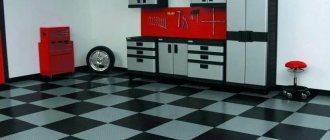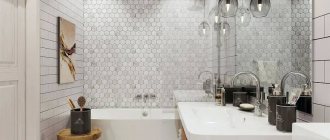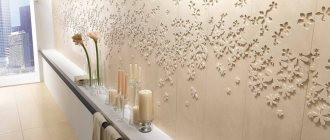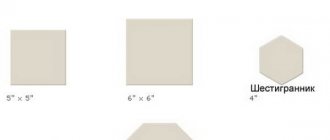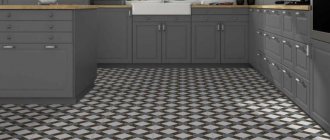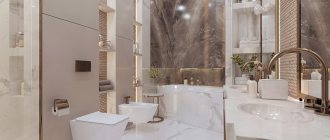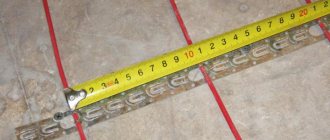Click to share
more
Ceramic tiles are one of the most durable and practical finishing materials. But that doesn't mean it has to be boring. All you have to do is place your bet on one of the most interesting offers - hexagonal tiles.
There have been many interesting models of ceramic tiles on the market for many years. They differ from each other, including coating, color or pattern. Selected drawings allow you to create unique wall compositions. When looking for tiles with a unique design, it is worth choosing a hexagon shape that will add personality to each interior.
Hexagons in the world of tiles
Honeycomb tiles are a very convenient tool for creating a unique interior and zoning a room. It can be completely different, from its shape to its surface structure.
Hexagonal tiles are usually made from porcelain stoneware and ceramics. For flooring, more classic solutions are used: a smooth or slightly rough surface (more textured tiles will not allow comfortable walking), the correct shape of the tiles. At the same time, wall coverings are more diverse: the shape of the tiles can be smooth, rough, with a convex pyramidal or semicircular surface and various other options.
In terms of shape, the tiles may also differ. The edges do not have to be the same: the hexagonal tile can be elongated, the sides can be different in size, etc. There are no limits to the designer’s imagination.
For different rooms
Hexagonal tiles come in a variety of sizes and colors. This material will look great in rooms for a wide variety of purposes.
In the bathroom, tiled flooring of standard shapes has become familiar and no longer looks original. An excellent alternative to square and rectangular tiles would be a coating in the shape of small hexagons.
Hexagonal tiles can have either a flat or convex surface. It would be more practical to choose matte, smooth tiles as a floor covering in the bathroom.
If the material is used to decorate individual areas, structural tiles will look more impressive.
Hexagons, which are visually similar to concrete or cement, are popular. Such models look quite original and create a warm atmosphere in the room. These materials will look great not only in the bathroom, but also in the bedroom.
Peculiarities
Honeycomb tiles are hexagonal floor and wall tiles. The hexagonal shape is its peculiarity, while the classic version of the tile, as a rule, only comes in square or rectangular shape.
To make this type of coating, natural material is used, in particular clay, which is poured into molds and baked in a special oven. In addition to the hexagon shape , such tiles can be octagonal. The second name for hexagonal tiles is honeycomb. This is due to the similarity of the shape of this material with a honeycomb. Tile 5-12 mm thick is used as floor tiles, wall tiles can be thinner.
Important! The thickness of wall and floor tiles may vary depending on the purpose of the room.
Pros - cons
Unusual finishing solutions are more popular than ever at the moment, and the hexagonal shape of the parts will be one of the advantages in this case - the result is a very beautiful and unusual surface. But the same point entails certain inconveniences: working with hexagons is more difficult than with squares or rectangles. In addition, trimming and adjusting the components of the coating to certain shapes of the surfaces to be finished is also more difficult.
In addition to the main parts, you can currently find on sale a whole series of various additional parts that allow you to create very noteworthy compositions from hexagons. Laying in rows can be a very interesting activity, reminiscent of folding a mosaic - by combining the components of different shapes you can get a unique and very beautiful sketch. With all this, you can combine not only parts of different shapes, but also different sizes of tiles.
Difficulties include the enormous labor intensity of the finishing process. While even a beginner can work with standard plates, it will be more difficult with hexagons. Here you will need to take into account many small aspects and painstakingly maintain equal gaps between adjacent masonry elements. If you make them uneven, it will be very noticeable and ruin the whole look. When laying such tiles on the floor, the work will be a little easier and without experience, but by following the requirements and rules for installing such a covering, this can be done. If you have to work on a wall, it is better to turn to a professional if you have never done such work before.
Hexagon Shape Meaning
In architecture, hexagonal tiles have their own meaning. People were inspired to create such tiles by nature, namely honeycombs. More than one generation of sages tried to find the sacred meaning of hexagonal honeycombs.
In different nations of the world, hexagon and oxagon (octagon) symbolize protection, a kind of amulet against evil spirits and evil spirits. Therefore, installing tiles of this shape can be regarded as protecting the house.
An interesting idea for using such tiles was also suggested by modern research by scientists. A huge hexagon was discovered on Saturn, which is considered a planetary vortex, with a regular hexagonal shape.
Knowing such subtleties can inspire a special and unusual design using hexagon tiles. The sacred meaning embedded in the interior always contributes to the creation of something special.
Types of hexagonal tiles
Tiles of this unusual shape may differ from each other. The very first difference that I want to highlight is the size. Hexagon tiles are most often found in the following formats:
- 51x59 cm. Most often decorated with metal. Preferably used for wall decoration.
- 28x32 and 36x41 cm - the standard format of hexagons made to look like terracotta.
- 36x42 cm - the size of outdoor hexagonal tiles.
- 36x41 cm. Most often, wood models are made of this size.
- 25x21. Eurotile format, which is distinguished by an unusual surface design.
- 6.5x7.5 and 15x17. An excellent option for installation on individual surface areas.
Texture options
The texture of such tiles can also be completely different. In many ways, the surface texture depends on the method of manufacturing the hexagon:
- Glossy. Glossy hexagonal tiles are covered with glaze during the manufacturing process. The material is slippery, so it is not recommended for use in the kitchen or bathroom. The technology allows you to create smooth and shiny tiles.
- Matte. Depending on the manufacturing technology, the surface of such a hexagon may be porous. In general, the difference from glossy tiles is that the surface is not covered with glaze.
- Embossed. A pattern is pressed onto the surface of the tile. Such tiles can be either porous or glazed.
- Polished porcelain tiles. Not a durable material with a smooth surface. The top layer is removed from the tile during the manufacturing process, which becomes the reason for its fragility. The pattern of such tiles resembles marble or granite.
- Semi-polished or lapped porcelain tiles. It differs from the previous version in high strength. During the processing process, the tiles are surface polished.
Beautiful examples
By combining hexagons of different colors you can create bright accents on the main background.
The original wall covering is made of tiles that differ in color and pattern on the surface.
Modules of hexagons of various colors form a harmonious composition with repeating patterns.
Wooden polyhedrons are great for decorating individual sections of the wall.
Hexagon tiles do not have to be laid on the entire wall. Partial surface cladding looks quite unusual and attractive.
Glass tiles with metal modules will be an excellent option for finishing a kitchen backsplash.
For information on how to join hexagonal tiles and laminate, see below.
03/29/2019 17:50 2019-03-29T14:50:29.000Z
Description:
Laying Kaindl laminate. This is the object where the base had to be trimmed with tile adhesive. The room is only about 12 m2, but I had to tinker all day
